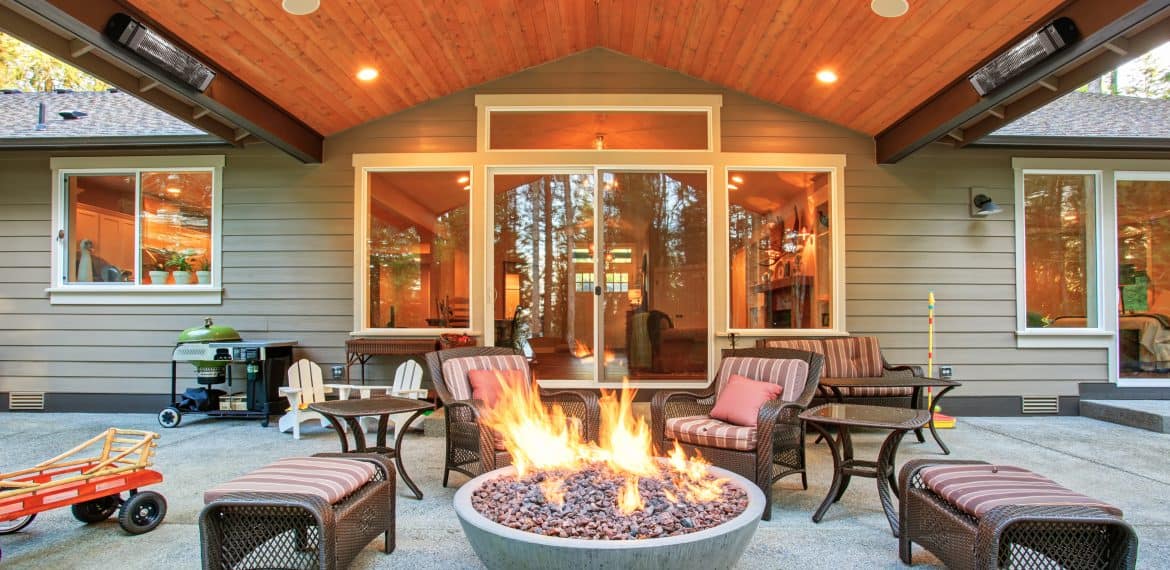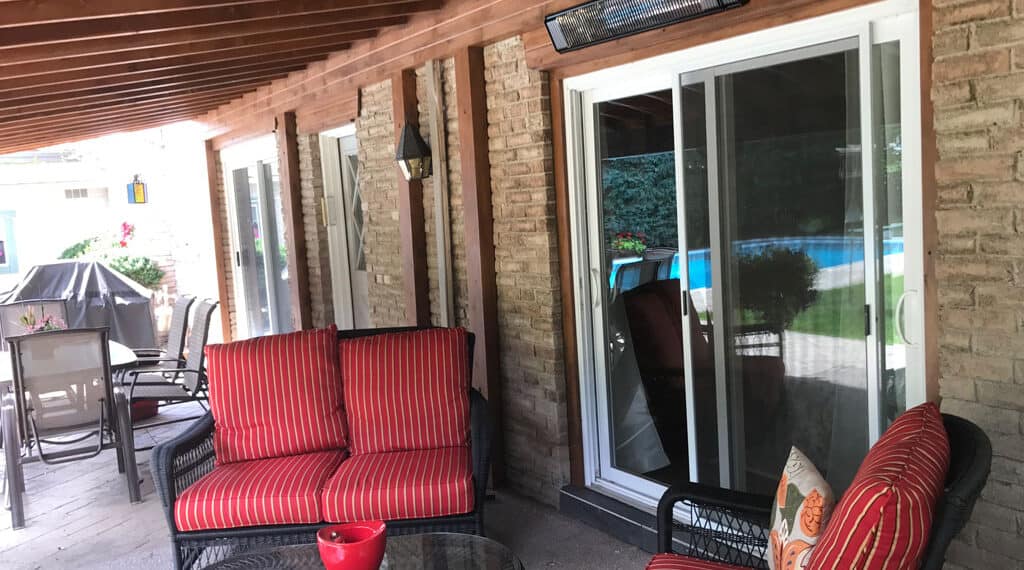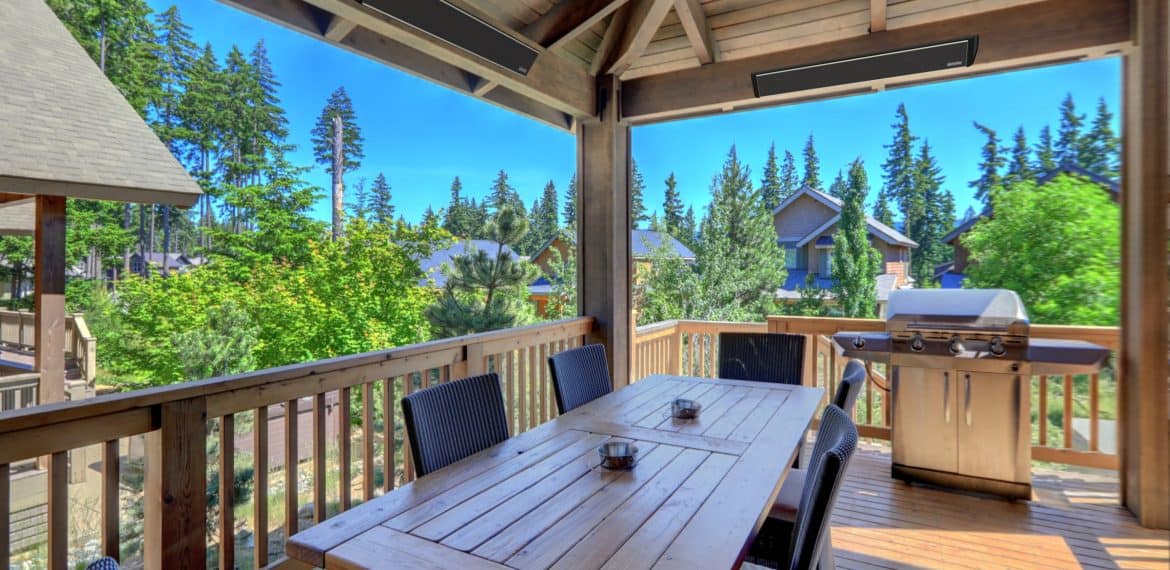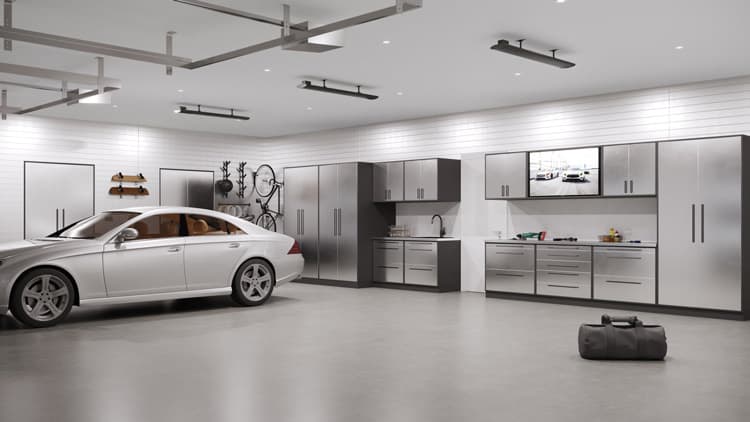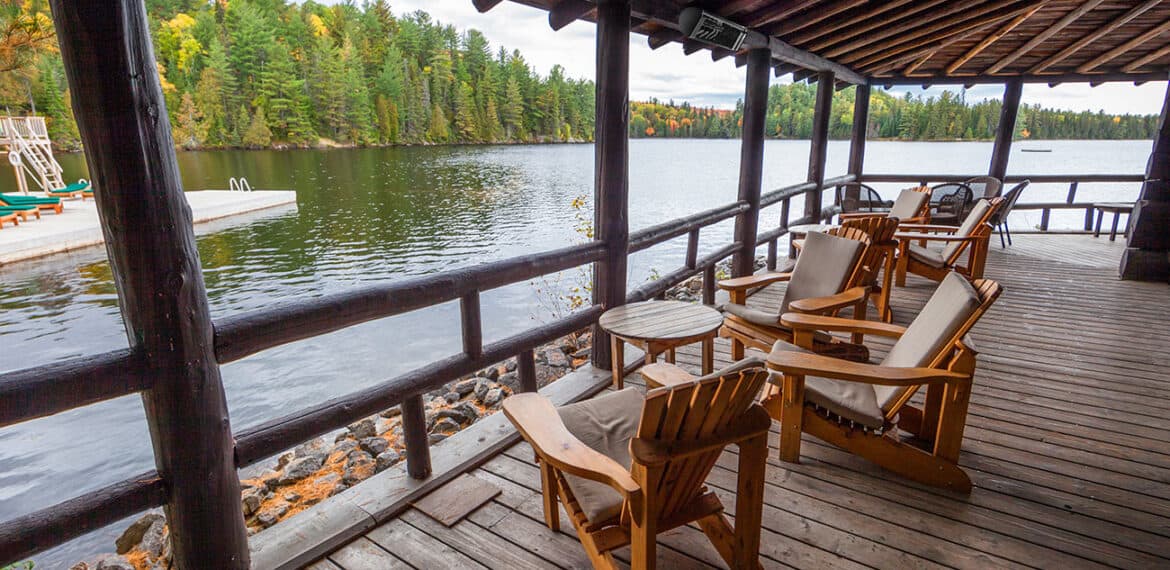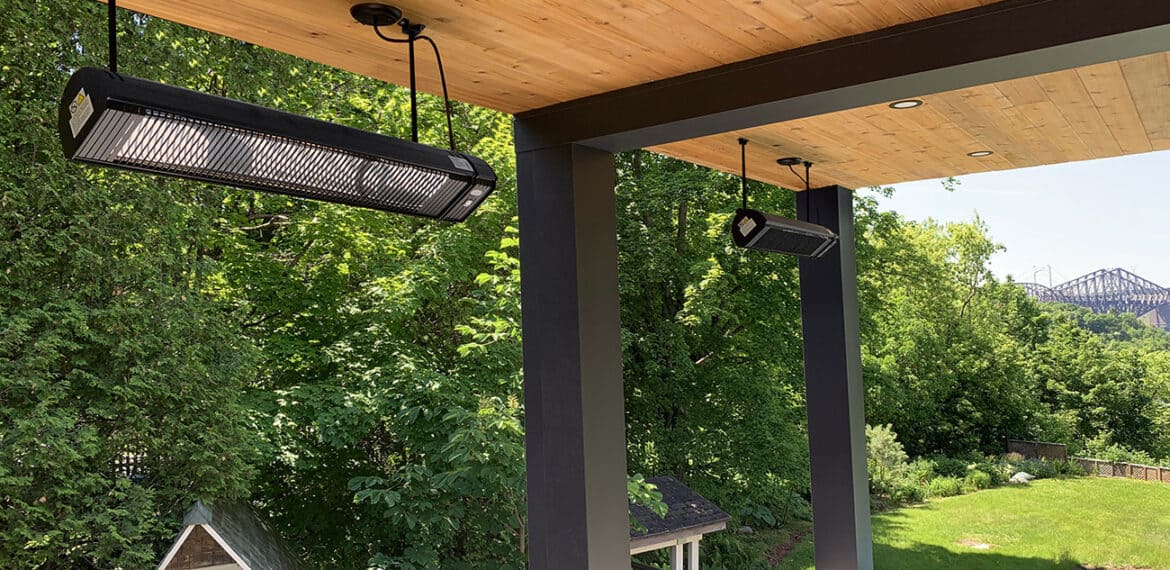Do Patio Heaters Work?
Do Patio Heaters Work? An Introduction
When choosing a patio heater, understanding the types of outdoor patio heaters available can help you make an informed decision:
- Infrared Heaters: The most energy-efficient option, they deliver targeted heat by warming objects and people directly rather than the air.
- Electric Heaters: Easy to use and environmentally friendly, these heaters are ideal for covered spaces with available power outlets. Electric outdoor heaters are known for their safety and efficiency, providing direct warmth without the risks associated with open flames.
- Propane Heaters: Portable and powerful, these are great for temporary setups but require regular refueling and emit greenhouse gases.
- Pyramid Heaters: Popular for their stylish designs, these heaters double as decorative elements but may not match the efficiency of infrared models.
- Tabletop Patio Heaters: Versatile and compact, these heaters can serve as decorative table centerpieces. They come in various designs and power sources, enhancing both functionality and aesthetics.
Infrared heaters, particularly those by Aura Heaters, offer the perfect combination of aesthetics, ease of installation, and exceptional heating performance. They’re a top choice for homeowners and business owners alike.
What Are Patio Heaters?
Patio heaters are outdoor heating devices designed to provide warmth and comfort in various outdoor spaces, such as patios, decks, gardens, and commercial outdoor areas. These heaters come in a variety of shapes, sizes, and fuel types, including propane, natural gas, electricity, and wood. Each type has its unique advantages and considerations.
Typically, a patio heater consists of a heat source, a reflector or emitter, and a housing or casing to protect the heating element. The heat source can vary from propane and natural gas to electric and wood-burning options. Propane heaters are known for their portability and powerful heat output, while natural gas heaters offer a continuous fuel supply, making them ideal for permanent installations. Electric patio heaters are praised for their ease of use and environmental friendliness, especially in covered spaces with accessible power outlets.
Patio heaters are not just about extending the usability of your outdoor areas; they also create a cozy and inviting ambiance, making your outdoor space a warm and welcoming retreat even during cooler months. Whether you’re hosting a gathering or enjoying a quiet evening outdoors, a patio heater can transform your outdoor experience.
How Do Patio Heaters Work?
Patio heaters use either radiant heating or convection heating to emit heat and provide warmth. Radiant heaters, like infrared models, are particularly effective because they emit infrared radiation that warms people and objects directly. This method is not only efficient but also ideal for areas with strong breezes, as the heat isn’t lost to moving air. Instead, it’s absorbed by surfaces, ensuring consistent warmth.
Convection heaters, such as propane or standard electric models, work by heating the surrounding air. While they can be effective in enclosed or semi-enclosed spaces, their performance diminishes in open, windy areas where the warm air quickly dissipates.
Why Infrared Heaters Excel: Aura Heaters’ advanced infrared technology stands out for its quick warm-up time, high energy efficiency, and ability to perform in challenging conditions. Unlike traditional heaters, they focus on heating where it matters most – you and your guests.
Types of Patio Heaters
When choosing a patio heater, understanding the types of outdoor patio heaters available can help you make an informed decision:
- Infrared Heaters: The most energy-efficient option, they deliver targeted heat by warming objects and people directly rather than the air.
- Electric Heaters: Easy to use and environmentally friendly, these heaters are ideal for covered spaces with available power outlets. Electric outdoor heaters are known for their safety and efficiency, providing direct warmth without the risks associated with open flames.
- Propane Heaters: Portable and powerful, these are great for temporary setups but require regular refueling and emit greenhouse gases.
- Pyramid Heaters: Popular for their stylish designs, these heaters double as decorative elements but may not match the efficiency of infrared models.
- Tabletop Patio Heaters: Versatile and compact, these heaters can serve as decorative table centerpieces. They come in various designs and power sources, enhancing both functionality and aesthetics.
Infrared heaters, particularly those by Aura Heaters, offer the perfect combination of aesthetics, ease of installation, and exceptional heating performance. They’re a top choice for homeowners and business owners alike.
Effectiveness of Patio Heaters
The effectiveness of most patio heaters largely depends on the type and the environment in which they are used. Here’s a breakdown:
- Wind Resistance: Infrared heaters excel in windy conditions because they heat objects directly, making them unaffected by air movement.
- Cold Weather Performance: High-quality heaters like the Aura CF Series operate efficiently even in freezing temperatures, ensuring comfort throughout the winter months.
Aura’s infrared heaters eliminate the need for constant adjustments or frequent propane refills, making them a reliable and hassle-free choice.
Advantages of Using Patio Heaters
Patio heaters provide numerous benefits that go beyond simple warmth. Here’s why they’re a smart investment:
- Extended Outdoor Use: Enjoy your patio or deck even in cooler months, transforming it into a year-round space. Outdoor heaters, such as propane, electric, and infrared models, enhance the usability of outdoor spaces for gatherings and dining.
- Enhanced Comfort: Provide a cozy atmosphere for guests during gatherings or quiet evenings. Propane heaters, in particular, offer excellent heat output and portability, making them ideal for outdoor settings.
- Eco-Friendly Options: Electric infrared heaters, like Aura’s models, produce no harmful emissions and are energy-efficient, reducing your environmental impact.
The Aura CF Series combines sleek, modern design with cutting-edge technology, delivering unparalleled comfort while aligning with sustainable living goals.
Patio Heater Safety Considerations
When using patio heaters, safety should always be a top priority to ensure a secure and enjoyable outdoor experience. Here are some essential safety considerations to keep in mind:
- Maintain Safe Distances: Ensure that your patio heater is placed at a safe distance from ceilings, walls, and any flammable materials. This helps prevent accidental fires and ensures proper heat distribution.
- Never Leave Unattended: Always turn off your patio heater when it’s not in use or when you leave the area. Unattended heaters can pose significant fire hazards.
- Keep Children and Pets Away: Patio heaters can get extremely hot, so it’s crucial to keep children and pets at a safe distance to avoid burns or other injuries.
- Ensure Proper Ventilation: If you’re using propane or natural gas heaters, make sure your outdoor space is well-ventilated to prevent the buildup of carbon monoxide, a dangerous and potentially lethal gas.
- Regular Inspections: Frequently inspect your patio heater for any signs of damage or wear and tear. Regular maintenance, as recommended by the manufacturer, will ensure your heater operates safely and efficiently.
- Follow Manufacturer Instructions: Adhere to the installation, operation, and maintenance guidelines provided by the manufacturer. This ensures that your heater functions correctly and safely.
By following these safety tips, you can enjoy the warmth and comfort of your patio heater while minimizing risks and ensuring a safe environment for everyone.
Environmental Impact of Patio Heaters
The environmental impact of patio heaters varies depending on the fuel type and energy efficiency of the heater. Here are some factors to consider when evaluating the environmental footprint of your outdoor heating options:
- Electric Patio Heaters: Generally, electric patio heaters are more energy-efficient and produce fewer emissions compared to propane or natural gas heaters. They are an excellent choice for those looking to reduce their environmental impact.
- Infrared Patio Heaters: These heaters are designed to target objects and people directly rather than heating the air. This targeted approach makes them more efficient and environmentally friendly, as they use less energy to provide the same level of warmth.
- Propane and Natural Gas Heaters: While these heaters are effective and powerful, they do produce greenhouse gas emissions, contributing to climate change. It’s essential to weigh the convenience and power of these heaters against their environmental impact.
- Wood-Burning Heaters: Although they can create a charming and rustic atmosphere, wood-burning heaters produce particulate matter and other pollutants, which can negatively affect air quality.
To minimize the environmental impact of your outdoor heating, consider using energy-efficient patio heaters and adopting sustainable practices. Opt for electric or infrared heaters when possible, and ensure that any gas or wood-burning heaters are used responsibly and efficiently.
By making informed choices, you can enjoy the benefits of outdoor heating while contributing to a healthier and more sustainable environment.
Choosing the Right Patio Heater for Your Needs
Selecting the right patio heater involves considering your specific requirements:
- Space Size: Infrared heaters are versatile, effectively warming both small patios and larger areas like restaurant terraces. Patio heaters powered by different energy sources, such as propane or electricity, can impact heating efficiency and suitability for various spaces.
- Climate: In breezy or cold conditions, infrared heaters offer unmatched reliability.
- Budget: Aura Heaters’ infrared models are not only affordable but also cost-effective to operate, reducing long-term expenses. Electric patio heaters, in particular, provide convenience and efficiency in various outdoor settings, making them a popular choice.
Common Myths About Patio Heaters
Despite their popularity, some myths persist about patio heaters. Let’s debunk a few:
- Myth 1: Infrared heaters don’t work in windy areas. Truth: Infrared technology heats people and objects directly, making them immune to wind.
- Myth 2: Electric heaters are too expensive to run. Truth: Aura’s infrared heaters convert 82% of electrical power into heat, making them highly efficient and cost-effective over time.
These misconceptions often stem from outdated technologies. Modern heaters, like those offered by Aura, prove that efficiency and performance go hand in hand.
Maintenance Tips for Maximum Efficiency
Proper maintenance ensures your patio heater performs optimally for years to come. Here are some tips:
- Clean the Heating Elements: Regularly remove dust and debris from infrared elements to maintain consistent performance.
- Check Connections: For propane or electric models, inspect connections to ensure safety and functionality.
- Maintain Outdoor Heaters: Regular maintenance of outdoor heaters is crucial to ensure optimal performance and longevity.
- Store Properly: Protect your heater from extreme weather when not in use to prolong its lifespan.
Aura Heaters are designed with durability in mind, featuring robust materials and easy maintenance requirements for long-lasting reliability.
Conclusion
Electric patio heaters are more than just a convenience; they’re an essential tool for maximizing the use of your outdoor spaces. Whether you’re hosting a dinner party, relaxing with a book, or running a bustling restaurant, the right heater can make all the difference. Advanced infrared models, like those from Aura Heaters, combine efficiency, durability, and style to deliver unmatched comfort year-round.
Outdoor patio heaters also create a warm atmosphere for various outdoor activities, enhancing the usability of your space even during cooler months.
For more information on cutting-edge heating solutions, explore Aura Heaters’ range of infrared patio heaters designed to transform your outdoor experience.
